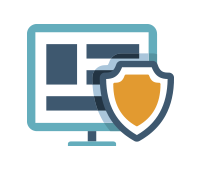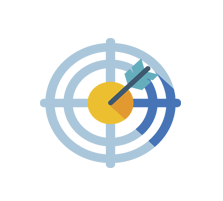Effective and trustworthy protection against DDoS attacks
With our DDoS protection solutions you can be sure that all your projects are protected. In this way, you will ensure the smooth operation of your business.
Additionally protect your project with our DDoS services.
DDoS attack mitigation
Intrusion Detection System (IDS)
Web Application Firewall (WAF)
Blocking hacking attempts
Secure Pages
Load balancing/failover
Layer 3/4 and 7 protection.

Website Protection
Always-on protection automatically detects and mitigates application layer

Network protection
Always-on or on-demand protection for your entire network infrastructure and subnets against network layer DDoS attacks attacks tha

Individual IP protection
Permanent protection against attacks that target your Internet websites or services hosted on individual IP addresses, local or in the public and private cloud

Protections for Layer 3/ 4 and 7 today.
DDoS attack mitigating
We proxy all inbound traffic to block DDoS attacks. This prevents them from reaching your initial metrics
What is a DDoS attack?
DDoS (Distributed Denial of Service) attack is a form of cyber attack in which attacking servers or computers flood network traffic to a target server or resource to overwhelm it and make it unavailable to users. This type of attack is called “distributed” because it typically uses a botnet, a network of computers infected with malware, to coordinate the attack.
How does DDoS defense work?
DDoS (Distributed Denial of Service) protection takes a variety of technical and strategic measures to prevent the harmful effects of attacks that target websites, online services or network resources. Depending on the types of attacks and the means of protection, different methods can be applied. Among the most popular methods are:
- Traffic Monitoring;
- Attack definition;
- Traffic filtering;
- Using a CDN (Content Delivery Network);
- Traffic Encapsulation;
- Distributed Cloud DDoS Protection, Adaptive Rate Limiting, Machine Learning and AI Services. DDoS protection is an ongoing process that adapts to evolving types of attacks to provide continuous protection of network and information resources.
What is Layer 3/ 4 and 7?
Layer 3, Layer 4 and Layer 7 refer to different levels or layers in the OSI (Open Systems Interconnection) model, which is a standard for looking at communication between different computer systems. In the context of network protocols and cyber defence, these terms are often used to describe different aspects of communication.
- Layer 3 (Network Layer): This is a basic network communication layer responsible for routing and transmitting data between different network devices. Protocols: IP (Internet Protocol), ICMP (Internet Control Message Protocol).
- Layer 4 (Transport Layer): This is the layer responsible for managing the connection between two systems, including flow control, session control, and error control. Examples: the Transmission Control Protocol (TCP) and the User Datagram Protocol (UDP).
- Layer 7 (“Application Layer”): The highest layer that provides the interface for applications and services. This layer refers to the applications running on the network.
- The Protocols: HTTP (Hypertext Transfer Protocol) and SMTP (Simple Mail Transfer Protocol). These terms are used to describe attack levels – if a DDoS attack can be made at Layer 3 (example: SYN/ACK attacks), Layer 4 (example: TCP or UDP flooding) and Layer 7 (example: HTTP and SMTP flooding). Understanding these layers is essential in selecting the appropriate defenses against different types of attacks.
